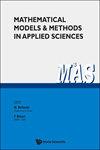The extent to which the 1969 organization of African Unity Convention is used concerning the 1951 Geneva Convention in determining the status of refugees in Burundi
IF 3
1区 数学
Q1 MATHEMATICS, APPLIED
Mathematical Models & Methods in Applied Sciences
Pub Date : 2023-01-01
DOI:10.12988/ams.2023.917385
引用次数: 2
Abstract
Burundi is overflowing with refugees, mainly from the Democratic Republic of Congo. Most of them are fleeing insecurity in their country of origin. As required by the UNHCR Handbook on International Refugee Protection and the Strengthening of National Asylum Systems, these refugees are entitled to adequate reception conditions that meet their basic needs and provide them with a decent standard of living in terms of health and welfare, pending a final decision on their asylum claim. After the reception, they must file their asylum applications as soon as possible with the Burundian asylum authorities, namely the Consultative Commission for Foreigners and Refugees (CCER) and the Appeal Committee (CR). To determine refugee status, these two asylum bodies base themselves on legal instruments, international, regional and national ones. One wonders then which of these legal instruments is used more in the determination of refugee status in Burundi. The analysis focused on the origin of the asylum seekers, on the legal basis of reference in the motivation of the decision as well as on the link between the place of reception of these asylum seekers and the decision taken. To select these files, we took into account the date of arrival of the asylum seekers (old and new) and their country of origin. We used Word, Excel, and SPSS to process the data.1969年《非洲统一组织公约》在多大程度上适用于1951年《日内瓦公约》以确定布隆迪境内难民的地位
布隆迪到处都是难民,主要来自刚果民主共和国。他们中的大多数人是为了逃离原籍国的不安全状况。根据难民专员办事处《国际难民保护和加强国家庇护制度手册》的要求,这些难民在对其庇护申请作出最后决定之前,有权获得满足其基本需要的适当接待条件,并在健康和福利方面为他们提供体面的生活水平。在接待之后,他们必须尽快向布隆迪庇护当局,即外国人和难民协商委员会和上诉委员会提出庇护申请。为了确定难民地位,这两个庇护机构以国际、区域和国家法律文书为依据。因此,人们想知道,在确定布隆迪境内的难民地位方面,这些法律文书中哪一项使用得更多。分析的重点是寻求庇护者的来源、决定的动机参照的法律依据以及这些寻求庇护者的收容地点与所作决定之间的联系。在选择这些档案时,我们考虑了寻求庇护者(新老)的抵达日期及其原籍国。我们使用Word, Excel, SPSS对数据进行处理。
本文章由计算机程序翻译,如有差异,请以英文原文为准。
求助全文
约1分钟内获得全文
求助全文
来源期刊
CiteScore
6.30
自引率
17.10%
发文量
61
审稿时长
1 months
期刊介绍:
The purpose of this journal is to provide a medium of exchange for scientists engaged in applied sciences (physics, mathematical physics, natural, and technological sciences) where there exists a non-trivial interplay between mathematics, mathematical modelling of real systems and mathematical and computer methods oriented towards the qualitative and quantitative analysis of real physical systems.
The principal areas of interest of this journal are the following:
1.Mathematical modelling of systems in applied sciences;
2.Mathematical methods for the qualitative and quantitative analysis of models of mathematical physics and technological sciences;
3.Numerical and computer treatment of mathematical models or real systems.
Special attention will be paid to the analysis of nonlinearities and stochastic aspects.
Within the above limitation, scientists in all fields which employ mathematics are encouraged to submit research and review papers to the journal. Both theoretical and applied papers will be considered for publication. High quality, novelty of the content and potential for the applications to modern problems in applied sciences and technology will be the guidelines for the selection of papers to be published in the journal. This journal publishes only articles with original and innovative contents.
Book reviews, announcements and tutorial articles will be featured occasionally.

 求助内容:
求助内容: 应助结果提醒方式:
应助结果提醒方式:


